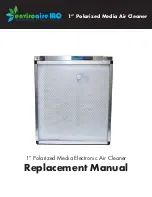
I.
PROBLEMS AFFECTING TXV
A.
Low Suction Pressure
1. Restriction in TXV
2. Low refrigerant charge
3. Low indoor load
4. Low evaporator airflow
B.
High Suction Pressure
1. Overcharging
2. Sensing bulb not secure to vapor tube
3. High indoor load
4. Large evaporator face area
When installing or removing TXV, wrap TXV with a wet cloth.
When reattaching TXV, make sure sensing bulb is in good thermal
contact with suction tube.
PISTON BODY CLEANING OR REPLACEMENT
CAUTION:
Do not vent refrigerant to atmosphere. Re-
cover during system repair or final unit disposal.
CAUTION:
Damage may occur to the scroll compressor
if operated at a negative suction pressure during a system
pumpdown.
1. Pump down outdoor unit. Close service valves at outdoor
unit.
2. Recover remaining refrigerant from tubing and coil through
gage port on vapor-tube service valve.
3. Disconnect refrigerant (liquid) tube from piston body. (See
Fig. 30.)
4. Avoid damaging seal ring or machined surfaces on piston,
bore, and retainer.
5. Using small wire with a hook on end of it, remove piston
from body.
CAUTION:
When cleaning the piston orifice, be careful
not to scratch or enlarge the opening, as this will affect
operation.
6. Install new or cleaned piston into body.
7. Replace seal ring on retainer.
8. Reconnect refrigerant tube to piston body.
9. Pressurize tubing and coil, then leak check.
10. Evacuate tubing and coil as necessary.
CAUTION:
Use a backup wrench and do not over
tighten, as deformation of the piston body will occur,
causing the piston to lodge in a partially open or closed
position.
LIQUID TUBE STRAINER
The TXV and refrigerant flow-control device is protected on the
indoor coil by a wire mesh strainer. It is located inside the 3/8-in.
liquid tube at field braze joint just outside unit casing. Access to
strainer is through field braze joint.
FA, FB, FC, FK COIL/CONDENSATE PAN REMOVAL
AND REPLACEMENT
I.
A-COIL UNITS
If it is determined that system does not have leaks and refrigerant
is not contaminated, proceed as follows:
1. Recover system refrigerant.
a. Attach manifold/gage set to service valves.
b. Front seat (close) liquid tube service valve.
c. Start unit in cooling mode.
d. Run unit until low pressure switch opens at 27 psig or
vapor pressure reaches 5 psig (35kPa). Do not allow
compressor to pump into a vacuum.
Fig. 30—Refrigerant Flow-Control Device
(For FA, FB, and FF)
A93530
PISTON
PISTON
RETAINER
BRASS
HEX NUT
BRASS
HEX BODY
TEFLON SEAL
Fig. 31—A-Coil Component Location
A90268
COIL TOP SEAL
EXPANSION DEVICE
(TXV SHOWN)
HORIZONTAL
CONDENSATE
PAN
HORIZONTAL
PAN CLIP
DELTA PLATE
VERTICAL
CONDENSATE
PAN
COIL BRACKET
(4 PER UNIT)
SCREWS–
DELTA PLATE TO
PAN (4 PER UNIT)
—36—
















































